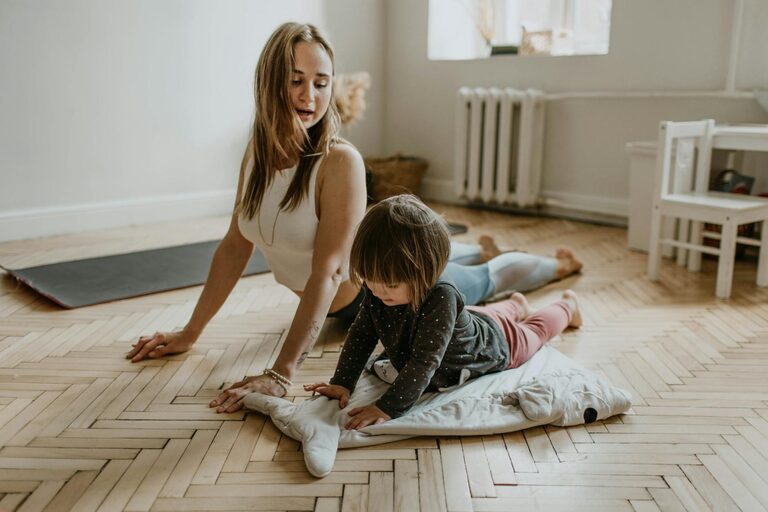Stretching is a key component of any fitness routine, helping to improve flexibility, increase blood flow, and reduce the risk of injury. The great news? You don’t need a gym or fancy equipment to enjoy the benefits of stretching. This beginner’s guide will walk you through easy, effective stretches you can do right at home, no matter your experience level.
Why Stretching Matters
Before jumping into the specific stretches, it’s important to understand why stretching is beneficial:
– Improves flexibility: Regular stretching helps lengthen muscles and tendons.
– Increases mobility: It allows joints to move through their full range of motion.
– Boosts circulation: Stretching enhances blood flow to muscles.
– Prevents injury: It reduces muscle stiffness and soreness.
– Enhances posture: Stretching can help correct muscle imbalances.
Incorporating stretching into your daily schedule—even for 10 to 15 minutes—can make a noticeable difference in how your body feels and moves.
Getting Started: Tips for Safe Stretching at Home
Stretching safely is just as important as the stretches themselves. Here are some tips to keep in mind:
– Warm up first: Stretching cold muscles can cause injury. Spend 5 minutes warming up with light cardio like walking or marching in place.
– Don’t bounce: Use smooth, steady movements to avoid muscle strain.
– Stretch to mild tension: You should feel a gentle stretch, never sharp pain.
– Breathe deeply: Focus on slow, steady breaths to help relax your muscles.
– Hold each stretch for 15–30 seconds: This gives your muscles time to release tension.
– Stretch both sides: Balance is key, so stretch both left and right sides evenly.
Essential Stretches for Beginners
Here is a simple routine that targets major muscle groups. Feel free to adjust based on your comfort level.
1. Neck Stretch
– Sit or stand tall.
– Gently tilt your head to the right, bringing your ear toward your shoulder.
– Hold for 20 seconds, feeling the stretch along the left side of your neck.
– Repeat on the left side.
2. Shoulder Rolls
– Stand or sit with your spine straight.
– Roll your shoulders forward in a circular motion 10 times.
– Reverse direction and roll backward 10 times.
– This movement helps release shoulder tension.
3. Chest Stretch
– Stand in a doorway with your arms bent at 90 degrees, hands touching the door frame.
– Step one foot forward and gently lean forward until you feel a stretch across your chest.
– Hold for 20 seconds.
– This helps open up the chest and counteracts slouching.
4. Cat-Cow Stretch (Spine Mobility)
– Get on your hands and knees in a tabletop position.
– Inhale and arch your back (cow pose), lifting your head and tailbone.
– Exhale and round your back (cat pose), tucking your chin toward your chest.
– Repeat 8-10 times slowly.
5. Seated Forward Bend
– Sit on the floor with your legs extended straight.
– Keeping your back straight, lean forward from your hips and reach toward your toes.
– Hold the stretch comfortably for 20-30 seconds.
– This stretch targets your hamstrings and lower back.
6. Butterfly Stretch (Inner Thigh)
– Sit with the soles of your feet together, knees bent outward.
– Hold your feet with your hands and gently press your knees toward the floor.
– Hold for 30 seconds to stretch your inner thighs.
7. Standing Quadriceps Stretch
– Stand tall and hold onto a chair or wall for balance if necessary.
– Bend your right knee, bringing your heel toward your buttocks.
– Hold your ankle with your right hand and keep your knees close.
– Hold the stretch for 20-30 seconds, then switch sides.
8. Calf Stretch
– Stand facing a wall with your hands pressed against it.
– Step your right foot back and press your heel into the floor.
– Keep your back leg straight and bend your front knee slightly.
– Hold for 20-30 seconds, then switch sides.
Creating a Stretching Routine
Consistency is key to seeing benefits from stretching. Here’s a simple way to build your routine:
– Choose 5 to 7 stretches that feel best for you.
– Schedule stretching sessions for 10-15 minutes, ideally once or twice a day.
– Consider stretching after workouts when muscles are warm.
– Alternatively, use stretching as a gentle way to start your day or wind down at night.
You might also want to keep a log to track your progress and notice increased flexibility over time.
Final Thoughts
Stretching at home is a simple, accessible way to take care of your body. By incorporating these beginner-friendly stretches into your daily routine, you’ll improve your flexibility, reduce tension, and feel more energized throughout the day. Remember to listen to your body and progress at your own pace.
Ready to get started? Roll out a mat, find a quiet spot, and enjoy your new stretching routine today!



